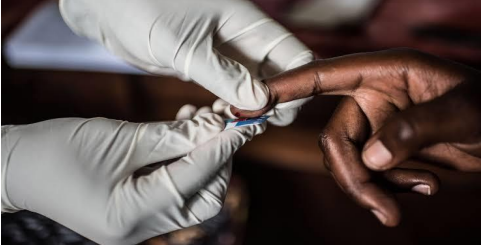STORY
REPORTS
PHOTOS
SHARE

SUMMARY:
In Uganda, there is high HIV prevalence rate amongst the youth and key populations i.e. Sex workers, men who have sex with other men (MSM), People who inject drugs (PWID), truck drivers, and adolescents.
HIV amongst the Youth in Uganda
- Young people (15-24 years) account for 32% of new HIV infection in Uganda.
- Adolescent girls and young women are disproportionately affected, with HIV infection rates up to 4 times higher than adolescent boys and young men.
- Factors contributing to high HIV risk among youth in Uganda include lack of comprehensive sexuality education, limited access to HIV testing and treatment, and social and economic inequalities.
HIV amongst Key Populations (KPs) in Uganda
- Key populations, including sex workers, men who have sex with men (MSM), People who inject drugs (PWID), truck drivers, and adolescent are disproportionately affected by HIV, accounting for 49% of new HIV infection in Uganda.
- Stigma, discrimination, and violence against key populations limit their access to HIV prevention and treatment services in Uganda.
- Factors contributing to high HIV risk among key populations in Uganda include biological vulnerability, social and economic marginalization, and limited access to healthcare services. The project contributes to reduction of new HIV infections among KPs and youths in Kampala and Masaka district by 2026 through enhancing awareness, utilization, and access to HIV prevention services.
CHALLENGES:
There is continuous acquiring of HIV in Uganda. Despite efforts to combat the epidemic, HIV remains a significant public health concern in Uganda. According to recent data, there are still new HIV infections occurring in the country, particularly among young people and key populations due to the following factors;
- Social and economic inequalities, including poverty, lack of education, and unemployment, increase HIV risk among both youth and key populations in Uganda.
- Stigma and discrimination against people living with HIV, youth, and key populations limit their access to healthcare services and increase HIV risk in Uganda.
- Limited access to comprehensive sexuality education, HIV testing, and treatment services contributes to high HIV risk among both youth and key populations in Uganda.
SOLUTIONS:
- Implement comprehensive and inclusive HIV prevention and treatment programs that address the unique needs of youth and key populations in Uganda.
- Address social and economic inequalities, including poverty, lack of education, and unemployment, to reduce HIV risk in Uganda.
- Promote stigma reduction and anti-discrimination efforts to increase access to healthcare services for youth and key populations in Uganda.
- Secure Pre-Exposure Prophylaxis (PrEP).
- Secure Post Exposure prophylaxis (PEP).
- Secure Condoms, both for male and female.
- Will hold community sensitization meetings to increase HIV awareness on prevention strategies.
LONG-TERM IMPACT:
- High efficacy; PrEP is highly effective in preventing HIV infection when taken as prescribed.
- Long-term protection
- Reduced transmission rates.
Donate once
Donate monthly
Your donation is secure and protected
View other ways to donate
Lyomoki Development Organisation
Verified Organization
Trusted Partner
Community Impact
Transparency
Accountability